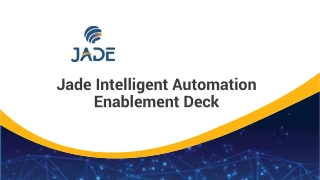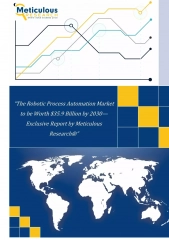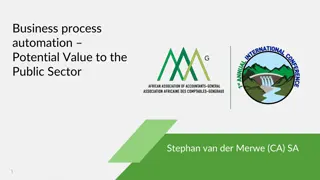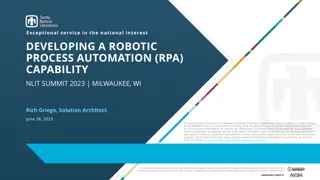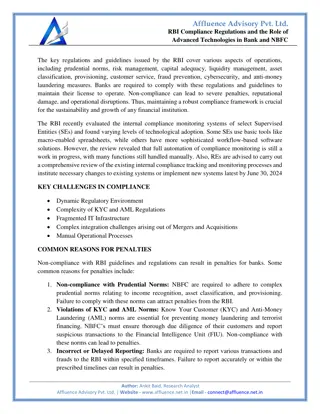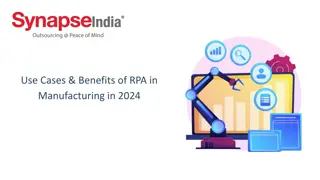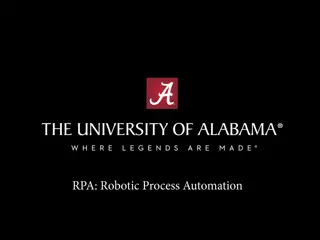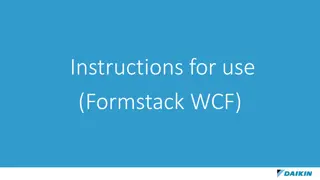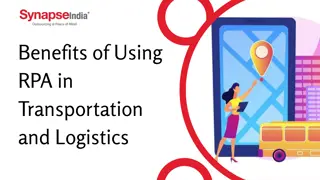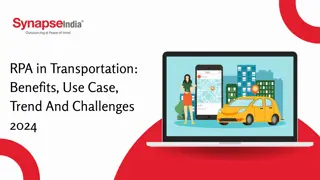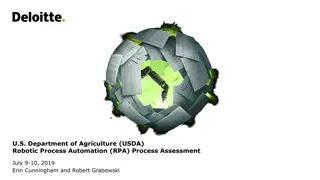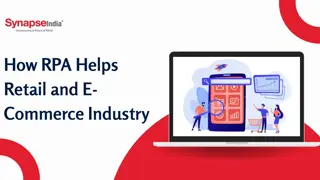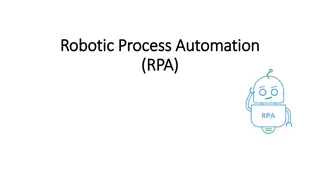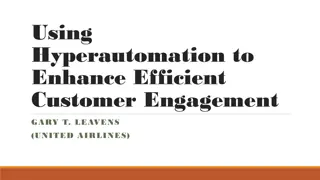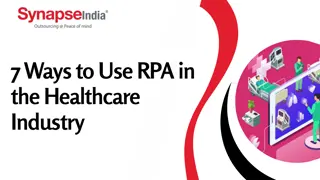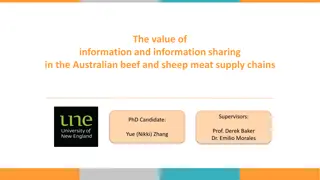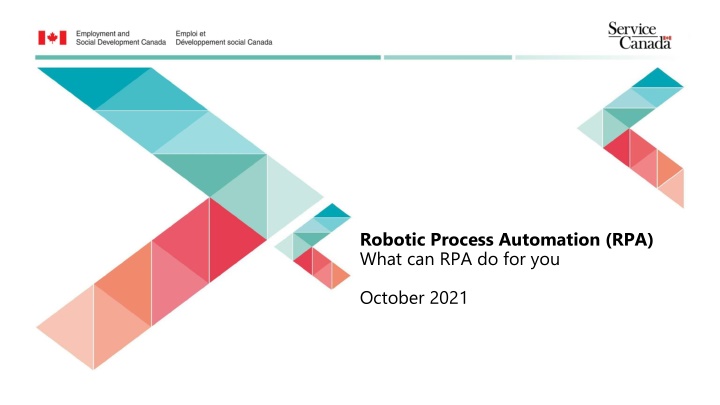
Robotic Process Automation (RPA) Overview - Empowering Efficiency
Robotics Process Automation (RPA) is a technology that automates internal processes, reducing manual tasks and empowering employees to focus on value-added work. RPA can access, gather, move, update, and consolidate data, fill forms, and perform data calculations. There are two types of bots for process automation: Attended and Unattended. Additionally, Artificial Intelligence (AI) provides digital solutions that exhibit human judgment for departmental tasks.
Uploaded on | 1 Views
Download Presentation

Please find below an Image/Link to download the presentation.
The content on the website is provided AS IS for your information and personal use only. It may not be sold, licensed, or shared on other websites without obtaining consent from the author. If you encounter any issues during the download, it is possible that the publisher has removed the file from their server.
You are allowed to download the files provided on this website for personal or commercial use, subject to the condition that they are used lawfully. All files are the property of their respective owners.
The content on the website is provided AS IS for your information and personal use only. It may not be sold, licensed, or shared on other websites without obtaining consent from the author.
E N D
Presentation Transcript
Robotic Process Automation (RPA) What can RPA do for you October 2021 1
Overview What is Robotic Process Automation (RPA) What is RPA Types of Bots What is Artificial Intelligence Successes with RPA 1 2 How to start your RPA journey Kick start your journey Considerations Questions 2 2
What is Robotic Process Automation (RPA) What is RPA Types of Bots What is Artificial intelligence (AI) Successes with RPA 3
What is RPA Robotics Process Automation is a technology that helps automate internal processes, and reduces the amount of manual and repetitive tasks. RPA empowers employees to focus on value-added work that requires human judgement and decision-making. Process Automation can Access and gather data from multiple systems Move data from one system to another Check and update data across multiple systems Consolidate information from different sources Fill standard forms and pre-populate data Perform data calculations 4 4
Types of Bots There are two types of bots that can be used for process automation: Attended and Unattended. However, neither can rival the creative capacity and problem-solving abilities of humans. Unattended Bots Attended Bots The user triggers the bot to run for a specific task, right on their desktop. Automations operate as a virtual desktop assistant, streamlining repetitive and manual processes. The bot is not trigged by the user, it is self- triggered and works in the background based on predefined conditions. For example, bots can validate files for processing. For example, tasks that include logging into systems, issuing documents, copying and pasting information, and pre- populating forms. 5 5
What is Artificial intelligence Artificial Intelligence (AI) is digital solutions that exhibit human or higher-level judgement to carry out tasks for the department. It is assumed that AI solutions contain some machine learning elements that enable them to continually improve their ability to carry out the task. What AI is and what it is not A spreadsheet that calculates sums and other pre-defined functions on given data Why: The user-specified formula determines the outcome with an automated calculator, no AI needed. A GPS navigation system Why: The signal processing and geometry used to determine the coordinates is not AI. Nevertheless, if variables such as traffic conditions are taken into account for providing good suggestions for navigation (shortest/fastest routes) then AI can be integrated into the GPS navigation system. Treasury Board Definition: Information technology that performs tasks that would ordinarily require biological brainpower to accomplish, such as making sense of spoken language, learning behaviours, or solving problems. 6 6
RPA Successes Since 2018, ESDC has successfully deployed RPA capabilities into our Service Canada processing operations. In the first year, Service Canada leveraged RPA for 183,000 CPP and OAS transactions. In 2020-21 the volumes exceeded 550,000 transactions, and for 2021-22, RPA is forecasting between 600,000 and 650,000 CPP and OAS transactions. Since then, pensions processing has successfully automated 14 Pensions-related processes and build capability to continue develop RPA to address increased workload pressures. Since the introduction of RPA: there have been 14 automations processes implemented nationally with over 1M transactions automated. another 4 processes will be implemented in the 2021-22 fiscal year; about 79% reduction in processing time on the Death Notifications automation; and about 38% reduction in Guaranteed Income Supplement (GIS) Auto Enroll (AE) processing time. While pensions processing has successfully build capability to continue develop RPA to address increased workload pressures, ESDC just ESDC kicked off EI RPA to support the Department s response to COVID-19 in April 2020. To date, the EI RPA operations have successfully deployed 8 automations into production to support EI Processing and Call Centres .
How to start your RPA journey Kick start your journey Considerations Questions 8
Kick start your journey There are several things to think about before embarking on your RPA journey. Clearly determining your business needs will help you identify whether RPA is a viable solution. To kick start your journey, you should: Determine your business needs and the right processes to automate (design thinking) Consult your IT Innovation Department Check your available resources (financial, HR, key partners, etc.) Consult with your senior management Confirm your need for procurement (consult with your experts!) Begin plans for project management (governance, gating, change management, communications and engagement, etc.) Process types that are best suited for RPA are Based on structured input data Involved significant manual work Prone to discrepancies associated with data entry Require employees to access a limited number of platforms or applications Prone to fluctuations in demand and / or backlogs Mid-to-high transaction volume Replicated processes 9
Considerations As you are implementing RPA in your business processes, there are many elements to consider. RPA Implemented Continued maintenance & communications Monitoring and Reporting Bot pilots and training Bot development & testing Change Management Enhancements Securing Resources Engagement & Communications Governance Determining ROI Determining PM Approach RPA Project Begins 10
Questions If you have any questions on RPA, please contact Jonathan Larocque. 11 11

